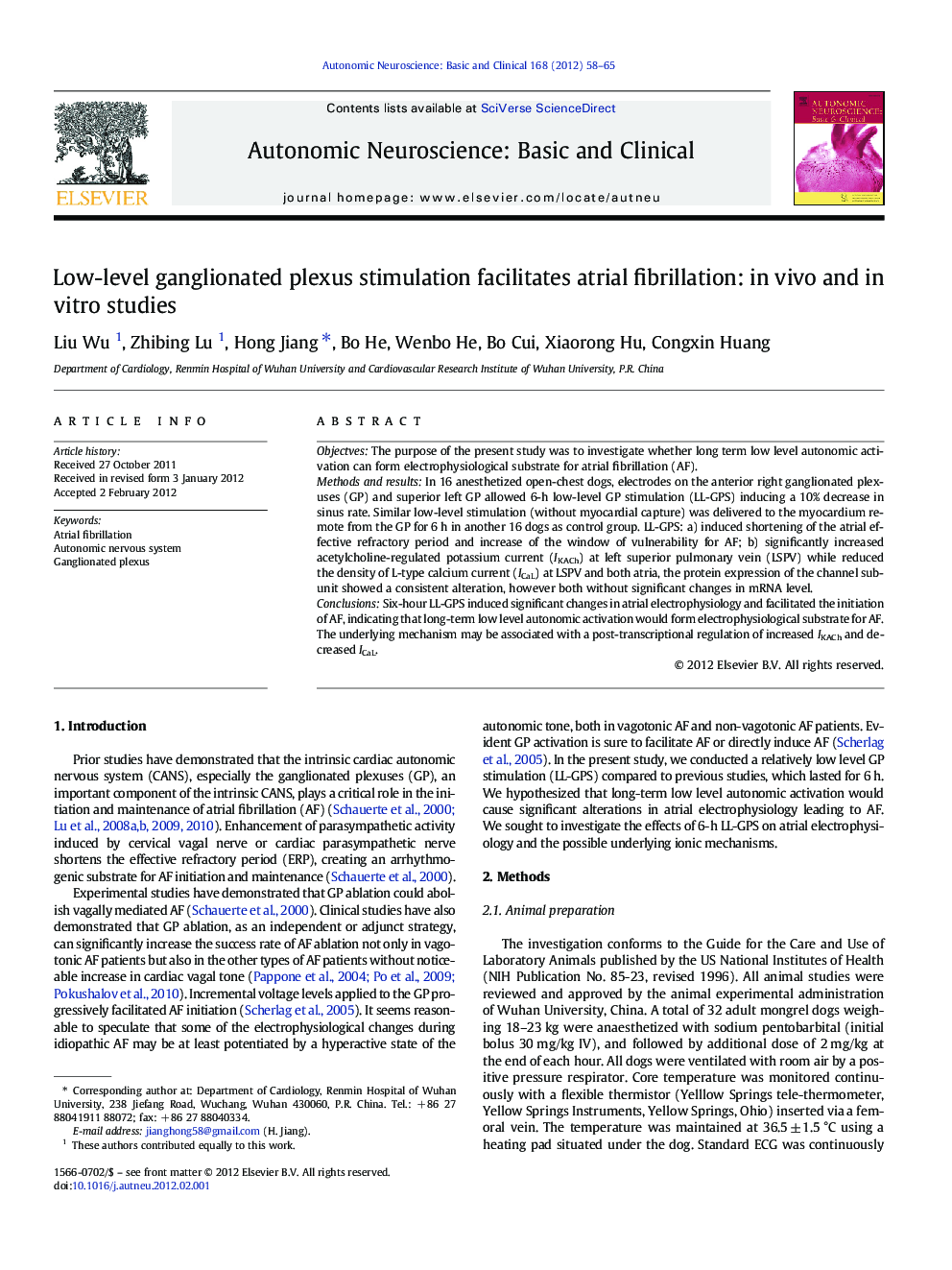| Article ID | Journal | Published Year | Pages | File Type |
|---|---|---|---|---|
| 3034863 | Autonomic Neuroscience | 2012 | 8 Pages |
ObjectvesThe purpose of the present study was to investigate whether long term low level autonomic activation can form electrophysiological substrate for atrial fibrillation (AF).Methods and resultsIn 16 anesthetized open-chest dogs, electrodes on the anterior right ganglionated plexuses (GP) and superior left GP allowed 6-h low-level GP stimulation (LL-GPS) inducing a 10% decrease in sinus rate. Similar low-level stimulation (without myocardial capture) was delivered to the myocardium remote from the GP for 6 h in another 16 dogs as control group. LL-GPS: a) induced shortening of the atrial effective refractory period and increase of the window of vulnerability for AF; b) significantly increased acetylcholine-regulated potassium current (IKACh) at left superior pulmonary vein (LSPV) while reduced the density of L-type calcium current (ICaL) at LSPV and both atria, the protein expression of the channel subunit showed a consistent alteration, however both without significant changes in mRNA level.ConclusionsSix-hour LL-GPS induced significant changes in atrial electrophysiology and facilitated the initiation of AF, indicating that long-term low level autonomic activation would form electrophysiological substrate for AF. The underlying mechanism may be associated with a post-transcriptional regulation of increased IKACh and decreased ICaL.
